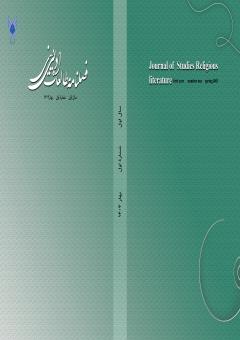Investigating the components of magical realism in the collection of "Kenizo" stories The work of Maniro Ravipour
Subject Areas : Main Subject
Nooshin Azin
1
![]() ,
ayyub omidi
2
,
ayyub omidi
2
1 - English Department, Islamic Azad University, Islamshahr Branch, Tehran, Iran
2 - Shahid Beheshti University of Tehran
Keywords: Kenizo, magical realism, Moniro Raufanipour, magic, magic.,
Abstract :
Magical realism is one of the types of realism literary school in which the author uses features such as magic, magic and imagination in the context of the realities of society in a subtle and skillful way. So that the characters and events of the story appear natural and normal to the readers. Muniro Ravipour is one of the authors who has presented some of his works in the style of magical realism. Kenizo's collection of stories by this author is an artistic example of this literary school in which the author, relying on the characteristics of magical realism, embodied the realities of his society by mixing elements of fantasy and imagination. The following article examines the characteristics of magical realism in this work with the aim of identifying these components. The results of the research show that, by relying on the components of magical realism and combining the realm of fantasy with the reality of society, Ravipour has presented this work as an artistic example of magical realism; Imagination and amazing and super logical events, disruption of the border between fantasy and reality, detailed description of details, voluntary silence and dealing with cultural and social issues are the most important components of magical realism in Kenizo's collection, which is more prominent than other elements of this style. It can be said that in the stories told in the rural environment, the structure of illusion and fantasy is more natural and believable, and this style is more successful and mature in the stories of Yellow Peacocks, Blue Peacocks, Mana, Kind Mana Mehraban, Sea in the Vineyards, and Mashang, respectively.
1. بهبهانی، سیمین.(1369). «در انتظار مروارید: نقد کتاب اهلِ غرق». چیستا، ش70، صص 1389-1395.
2. بی¬نا.(1384). «زنان داستان¬نویس». حافظ، ش21، صص 73 – 71.
3. پارسی¬نژاد، کامران.(1378). ساختار و عناصر داستان. تهران: سوره.
4. پورنامداریان، تقی؛ سیدان، مریم.(1388). «بازتاب رئالیسمِ جادویی در داستانهای غلامحسین ساعدی». زبان و ادبیات فارسی(مجله دانشکده ادبیات و علوم انسانی دانشگاه تربیت معلم)، شماره 64، از ص 64 تا ص45.
5. دوشیری، نسرین.(1369). «نقد کتاب کنیزو». کلک، ش1، ص 76-72.
6. رادفر، ابوالقاسم.(1378). «نگاهی گذرا بر فعالیتهای بانوان داستان نویس در دو دهه اخیر». ادبیات داستانی، ش51، صص 49-40.
7. روانی¬پور، منیرو.(1367). کنیزو. تهران: نیلوفر.
8. سید حسینی، رضا.(1387). مکتبهای ادبی. تهران: نگاه.
9. شمیسا، سیروس.(1393). مکتب¬های ادبی. تهران: قطره.
10. علیزاده، فرحناز.(1390). «نقد کتاب ظلمات محمد علوی». کتاب ماه ادبیات، ش53: صص 26-12.
11. فرزاد، عبدالحسین.(1381). درباره نقد ادبی. تهران: قطره.
12. کسیخان، حمیدرضا.(1390). «بررسی تطبیقی مؤلفه¬های رئالیسم جادویی در طبل حلبی از گونترگراس و صدسال تنهایی مارکز». دو فصلنامۀ زبان¬پژوهی دانشگاه الزهراء(س)، س2، ش4، صص 126-105
13. میرصادقی، جلال.(1380). عناصر داستان. تهران: سخن.
14. میرعابدینی، حسن.(1383). صد سال داستاننویسی ایران. ج3، تهران: نشر چشمه.
15. نصراصفهانی، محمدرضا و جعفری، طیبه.(1389). «گاو، مسخ مقایسۀ شیوۀ شخصیت در رمان گاو ساعدی و مسخ کافکا». نشریۀ زبان و ادب فارسی دانشکده ادبیات دانشگاه تبریز، 253، ش215، صص 156-133.
16. Cuddon, John Anthony,(1992), The Penguin dictionary of literary terms and literary theory. Penguin books.

